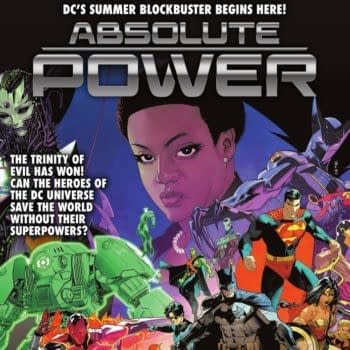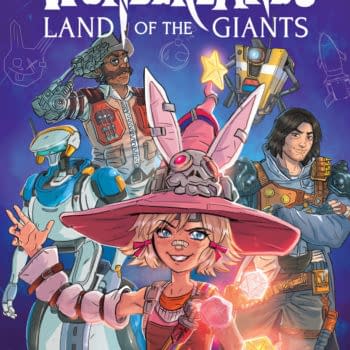Posted in: Comics, Recent Updates | Tagged: ashley wood, Bill Sienkiewicz, Boom! Thomas Alsop, Chris Miskiewicz, Comics, entertainment, frank miller, Hermann, luc besson, Matthias Schultheiss, MoCCA Fest, new york, NYCC, Palle Schmidt, Peter Snejbjerg, quentin tarantino, Raymond Chandler, rpg, sdcc, Stiletto, The Devil's Concubine
Noir, Thomas Alsop, And Showing Up To The Party – Palle Schmidt Talks Comics
By Nikolai Fomich
![Palle Schmidt [Photo by Pernille Enoch]](https://mlpnk72yciwc.i.optimole.com/cqhiHLc.IIZS~2ef73/w:auto/h:auto/q:75/https://bleedingcool.com/wp-content/uploads/2014/07/Palle-Schmidt-Photo-by-Pernille-Enoch.jpg)
Last week I reviewed the first two issues of BOOM!'s new series Thomas Alsop, and today I follow up by chatting with the book's artist Palle Schmidt. Palle spoke to me about his early career in Denmark, his love for noir, how he got involved with Alsop, and just how important "showing up to the party" really is when trying to break into comics.
Nikolai Fomich: Palle, why did you decide to become an artist?
Palle Schmidt: I was never good at anything else [laughs]! I was always drawing as a kid, and it never occurred to me to stop. But it wasn't until the mid-90's that I realized it might be a career for me – or anyone else, for that matter! That's when I met artist Peter Snejbjerg (Starman, Books of Magic, A God Somewhere) and started [working] at Gimle Studios in Copenhagen. That's where I spent the next twelve years making a living from illustration work, while also doing my own projects. So meeting a peer group and simultaneously failing at the University and School of Architecture were the main reasons I ended up as a full-time artist.
NF: What kind of illustration work did you do?
PS: All kinds, really. Kid's books, storyboards, book covers, magazine illustration, live drawing for corporate events and workshops. In the later years I started doing illustrations for YA novels, which is how I ended up writing them myself. An editor suggested I might be good at it based on my comics writing and although I felt I was writing for adults, I figured why not give it a shot?
NF: Your influences come from both American and European comics. Which artists have influenced you the most – from both sides of the Atlantic?
PS: My biggest influence is probably Frank Miller, whose Daredevil and later The Dark Knight Returns and Sin City permanently got lodged in my brain. Superhero noir! The Devil's Concubine is heavily influenced by Risso's art in 100 Bullets, another great American noir comic. Brubaker and Phillips' Criminal is another favorite.
With STILETTO I approached the art in a much more gritty, sketchy fashion, influenced more by people like Bill Sienkiewicz, Ashley Wood, and the German artist Matthias Schultheiss, [who] I rediscovered at that time. It was so much easier for me to work this way – a lot faster, more intuitive and fun than trying to copy Peter Snejbjerg's slick inking style! Another European influence is Hermann, of Jeremiah fame. I learned so much about texture and landscape from that guy. And like everyone else, I have to throw in Mignola, the master of composition.

NF: Throughout the 90's, you illustrated for the Danish roleplaying magazine Fønix, including for comic strips starring Fønix's mascot "Ronni the Rat." In 2000, you created your own detective roleplaying game, Fusion, which you later expanded into other kinds of media. Talk a bit about that early stage of your career. What drew you into the world of RPG's?
PS: Roleplaying was a booming subculture when I was growing up, and it attracted a lot of people who, like me, were picked last for the soccer team. I loved being immersed in stories in all types of genres, seeing the world through these fictional characters' eyes. Writing and drawing for roleplaying games and magazines was how I learned the craft – and learned how to keep a deadline. I love creating stuff out of nowhere and seeing it all come together. For me there always had to be a product at the end of it, something to show. Just playing for fun ultimately was not enough and I wanted a bigger audience. So I went for comics! Clever, dude, really clever…
NF: In addition to comics – which we'll return to in a minute – you've also worked on several screenplays and young adult novels. What is the appeal of writing screenplays and YA literature, as opposed to just sticking to comics?
PS: Well, Thomas Alsop is the first time I've ever really been paid to make comics. So that's one difference! The other is that I can tell twice as many stories, if I don't have to draw the damned thing afterwards. Drawing comics takes a lot longer than writing, and in my part of the world there's not much of an audience for it.
I've written four YA novels so far and they're all sort of crime thrillers, only with teenagers. Of my screenplays only one has been produced, a great little animated thriller I was hired to write in English. It's called "Down the Road." I don't know if it can be found online, but it's worth checking out.
As a creator, you roll with whatever opportunities you get. I just want to tell stories, I almost don't care what medium. Depends on the story.
NF: Your breakout comic was the noir thriller The Devil's Concubine from IDW – which you both wrote and drew – about two contract killers who end up on the run after the delivery of a mysterious package goes murderously wrong. One of the most interesting aspects about that graphic novel was the dynamic between the two leads, Jean-Luc and Linda. What drove you to create that story?
PS: I'm pretty sure it was a combination of seeing Luc Besson's Nikita and Quentin Tarantino's Reservoir Dogs. At the time I started thinking up the story – almost ten years before it was finally in print! – Danish comics were very well-meaning morality tales for kids, usually with some history lesson baked into it. I wanted to create something uniquely entertaining and post-modern, rather than set in any real world. So it was a counter-reaction to a scene you never heard of and never will.
[From The Devil's Concubine]
NF: You followed The Devil's Concubine with STILETTO, which is available in Danish but not yet in English. STILETTO explores not only corruption, but also the motivations behind it. It's a work that manages to humanize characters who make despicable choices. Without giving too much away, what is STILETTO about?
PS: STILETTO looks and feels like a 70's cop thriller on the surface but there's a lot more going on beneath the surface. Basically, it's two detectives on the hunt for a cop killer and a mole within the department. It's corruption and intrigue and violence – very upbeat and happy [laughs]!
NF: Any chance on an English language edition any time soon?
PS: I certainly hope so! I wrote it in English and it's all set and ready to go to print. There's a sample at www.stilettographicnovel.com, so any publishers reading this – give me a call!
[From STILETTO]
NF: It's clear from all your work that you have a deep love for noir. What is it about that genre that draws you in? What are some of your favorite noir films, books, and comics?
PS: I'm not so interested in the "whodunit" aspect. I like trying to figure out what's going on, but ultimately what interests me is the psychology and the grey areas in morality, and the sense of impending doom. The first crime movies I remember were French caper movies from the 60's I watched with my dad. If I could only bring one noir movie to a deserted island with me, it would be Alan Parker's Angel Heart. The atmosphere and the plot of that movie are just impeccable, the score is a dark, jazzy nightmare, and Mickey Rourke is spectacular as the gumshoe destined to go to Hell for his sins.
For the longest time I thought of myself as a sci-fi geek because Blade Runner was (and probably still is) my favorite movie. But Blade Runner is really a noir set in the future! Other favorites I have to mention are Rififi, The Third Man, Le Cercle Rouge, The Conversation, Heat, Brick, L.A. Confidential, Drive, the French prison movie A Prophet, the Danish movie Pusher and of course TV shows like NYPD Blue, The Sopranos, The Wire and The Shield.
I already mentioned all my favorite noir comics. In books there's no beating Raymond Chandler. I read all his books as part of the research for the detective roleplaying game I was creating, Fusion. I tend to go towards the hardboiled nostalgia stuff, James Lee Burke, Eddie Bunker, Andrew Vachss, Robert Crais. Later I was introduced to James Ellroy and everything else seemed watered down in comparison! It's weird, because there's this wave of Scandinavian crime noir coming out, but I've hardly read any of it. My influences are almost exclusively American.
NF: Having written and illustrated so many stories in that genre yourself, how do you manage to use so many of the elements that make up classic noir without your story becoming clichéd?
PS: As I said in another interview recently, you have to know the tropes in order to turn them on their head. Basically that's where twists come from – [reader's having] expectations of a genre and its characters, and [the writer] pulling the rug out from under them. It's a delicate balance. I'm not sure I get it right every time, but I try.
NF: In addition to your creative work, you also write for the website "Comics for Beginners." What essential piece of advice for breaking into the industry do you think is not talked about enough?
PS: Showing up to the party. If there's one thing I regret it's not going to a US con sooner, just to meet people and soak up the atmosphere. You need peers and role models to overcome that fear of failure or just to believe it can be done. I was lucky to meet a crowd of exceptionally talented people in Copenhagen who got me to up my game and make the jump to a freelance life. I most likely would have given up without that support group. I created "Comics for Beginners" to give something back, hopefully help aspiring creators avoid some of the pitfalls I fell in, and give some guidance. God, there's so much advice to give in this area, but that's what I do at the site.
NF: Currently you're illustrating Thomas Alsop, which you created with Chris Miskiewicz for BOOM!. How did you get involved with the project?
PS: Showing up to the party! I met Chris Miskiewicz at the MoCCA Festival in New York, my first US con. We instantly became friends and collaborators, first on a short story for his Everywhere! anthology on Act-I-Vate. Then we started developing Thomas Alsop, beginning with a short story, "The Case of Dead Uncle" for Trip City. After I drew the first issue we pitched the book at SDCC last year and BOOM! picked it up. Amazing. This never would have happened had I stayed at my studio back in Copenhagen.
[Thomas Alsop – The Case of the Dead Uncle]
NF: Why should readers pick up Thomas Alsop?
PS: Because it's darkly funny, scary and ballsy, and has one of the most outrageously unlikely heroes you ever saw. People draw comparisons to Hellblazer but I think it's a lot less cynical than that book. Don't get me wrong, I love Hellblazer! Especially Brian Azzarello's run with the amazing artist Frusin. But luckily for us, they cancelled the book to make room for Alsop. Thanks, Vertigo!
[*There be Spoilers beyond these parts for Thomas Alsop!]
NF: 9/11 is of course a sensitive topic – what was your reaction when you learned what Chris was planning with the big reveal at the end of #2?
PS: The crazy thing is that he pitched me this the first time I met him. At the time I didn't think it had anything to do with me, but it sounded like a really strong plot. I think a certain amount of controversy is better than bland, middle-of-the-road storytelling. Remember, I'm from the land of Lars Von Trier, so I don't shock easily [laughs]! I do remember getting a sinking feeling when I discovered the slave ship we see in issue #1 actually was found at the WTC site. That's what makes the story so powerful, that the real and the unreal blend together in this really unique way. I think it's an important story and I feel very blessed to be part of it.
NF: The miniseries is set in both present day New York and the New York of 1702. What kind of research did you find yourself doing while illustrating the story?
PS: Oh God, way too much! Luckily I chose a drawing style where I can get away with a lot less details than had I done it in traditional ink. I looked at tons of renderings of old New York, colonial style clothing and furniture. I had to take some liberties, but hopefully it gives off that 1700's vibe. I find the present-day New York [segments] to be more challenging in fact. Not just because there're people and cars everywhere and way too many straight lines – but also because if I place the Empire State Building wrongly, people are bound to notice! I often find myself going to Google Maps street view to find my way around Manhattan. And I've taken tons of reference photos on my trips there.
[From Thomas Alsop #2]
NF: Finally, in addition to Thomas Alsop, any new projects we can expect from you in the future?
PS: Right now I got Thomas Alsop coming out my ears and it's hard to think of anything else. I do know I want to get more writing done, but if all goes well, the story of Thomas Alsop will continue after these initial eight issues. I do hope to get STILETTO out somewhere in between. It's a book I'm very proud of and I really want everyone to be able to read it.
Many thanks to Palle for taking the time to talk about his career and upcoming projects! Come back soon to listen in when I chat with Chris Miskiewicz, the writer of Thomas Alsop and the #222 most influential person in comics!



















